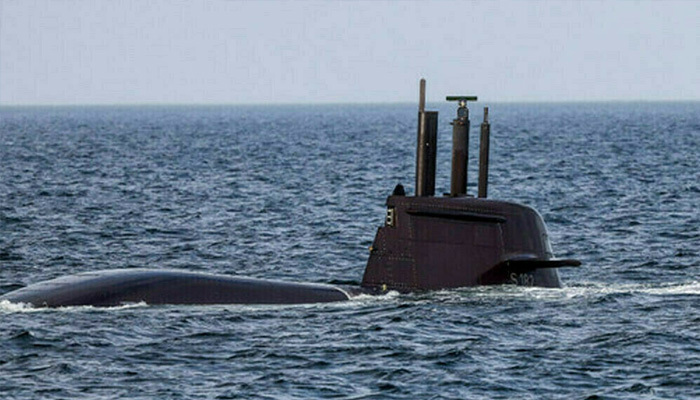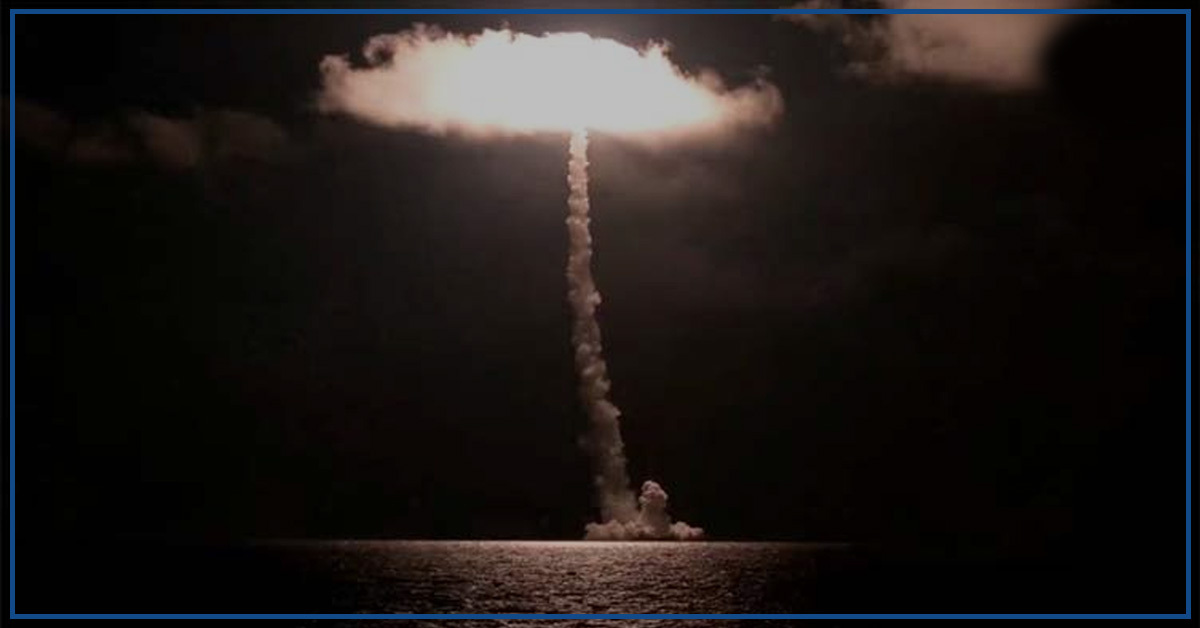Russia’s new strategic nuclear submarine, the Imperator Alexander III, has conducted a successful test of the Bulava intercontinental ballistic missile. The Russian defence ministry made this announcement on Sunday, marking a pivotal moment in the country’s military capabilities.
The Bulava missile, known for its capacity to carry up to six nuclear warheads, was launched from an underwater position in the White Sea off Russia’s northern coast.
It hit a target thousands of kilometres away on the Kamchatka Peninsula in the Russian Far East, according to the defence ministry. This test marks the final stage of state tests for the missile system, a crucial step before the cruiser’s official acceptance into the Russian Navy.
The Imperator Alexander III is part of the Russian Project 955 Borei class, also known as the Arctic Wind class, and it represents the fourth of the modernized Borei-A variant.
These submarines are commonly referred to as the Dolgoruky class, named after the first vessel of this new generation, the Yuri Dolgoruky, which was launched by Russia at the end of the Cold War.
One notable feature of the Borei class submarine is its armament of 16 Bulava missiles. The Bulava missile, with a length of 12 meters (approximately 40 feet), boasts an impressive range of about 8,000 kilometres (5,000 miles).
Russian President Vladimir Putin has consistently increased military spending and aimed to strengthen Russia’s nuclear and conventional forces since taking office in 1999. This drive is in response to the tumultuous period that followed the collapse of the Soviet Union in 1991.

The ongoing conflict in Ukraine has strained Moscow’s relations with the West, leading to one of the most severe crises since the Cold War era. President Putin recently stated that he was undecided on whether Russia should resume nuclear testing, highlighting the tension in international relations.
Kremlin spokesman Dmitry Peskov expressed the dire state of relations with the United States, describing them as “below zero.” Despite this, he also mentioned that both nations would eventually need to reestablish contact, as President Putin has repeatedly expressed his readiness for such engagement.
As part of its strategic plans, Russia intends to build a total of 10 to 12 Borei-class submarines, distributed between the Northern and Pacific fleets.
The Russian media has disclosed these current plans, which also include the construction of three additional Borei-class submarines: the Knyaz Pozharsky, the Dmitry Donskoy, and the Knyaz Potemkin.
Furthermore, two more submarines are in the pipeline, all designed to carry the formidable 12-meter-long Bulava missile, which serves as the cornerstone of Moscow’s nuclear triad and has an impressive range of over 8,000 kilometres (close to 5,000 miles).
The West has accused Russia of employing reckless nuclear rhetoric, especially in the wake of its offensive against Ukraine, which began in February last year. President Vladimir Putin’s recent signing of a law revoking Russia’s ratification of the Comprehensive Nuclear Test Ban Treaty has drawn strong criticism from the United States.
The Comprehensive Nuclear Test Ban Treaty, established in 1996, seeks to outlaw all nuclear explosions, including live tests of nuclear weapons. However, it never came into force because several key countries, including the United States and China, never ratified it, emphasizing the complexities of global nuclear disarmament efforts.
The successful testing of the Bulava missile on the Imperator Alexander III underscores Russia’s ongoing commitment to strengthening its nuclear capabilities. With President Putin’s recent actions regarding the Comprehensive Nuclear Test Ban Treaty, there are growing concerns about the implications for global security.
This development will likely further strain relations between Russia and the West, particularly the United States, adding to the already precarious state of international affairs. As both sides grapple with their nuclear arsenals and geopolitical tensions, finding common ground for dialogue becomes increasingly challenging.
In the face of these developments, the world watches closely, hoping for diplomatic solutions to prevail and for stability in the realm of nuclear deterrence and international relations.





